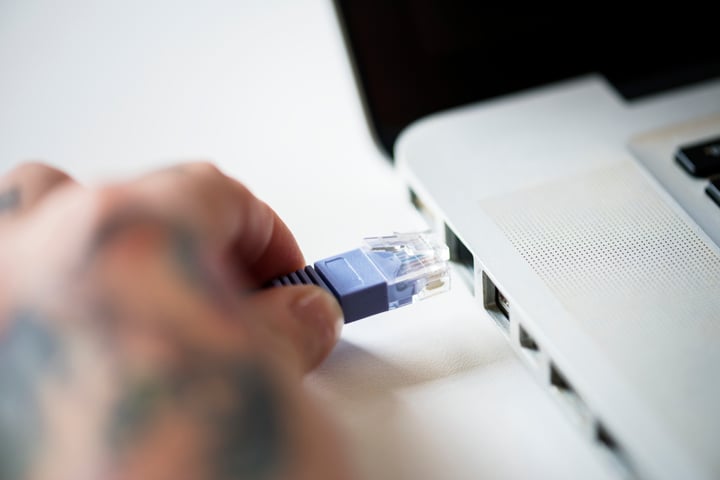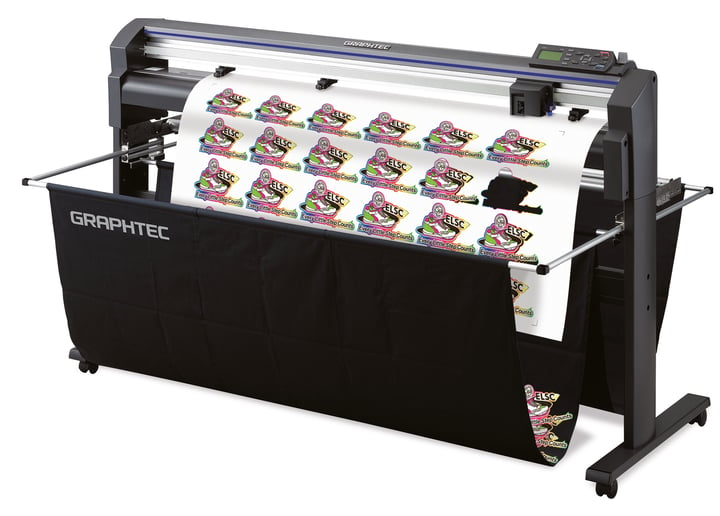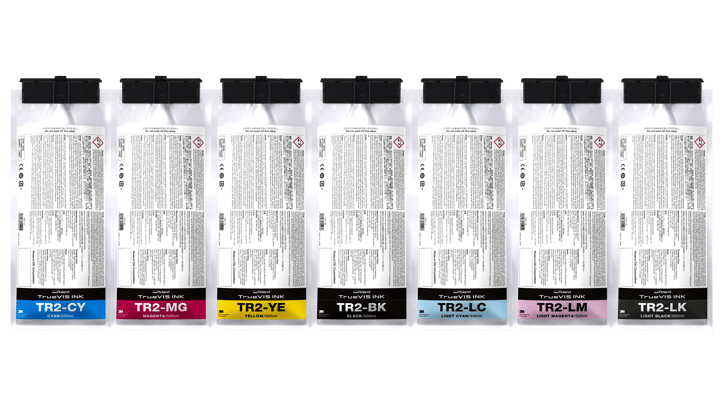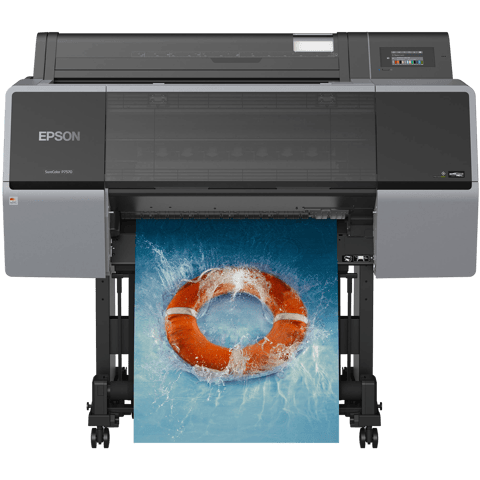Purchasing a printer for your business can be a major investment, similar to buying a vehicle. Both...
What to Look for When Considering a Digital Printer, Part 2

In What to Look for When Considering a Digital Printer, Part 1, we discussed the importance of proper planning when purchasing a printer.
Today, we will discuss printer hardware options and the process of evaluating the many great options on the market today.
Step 4: Printers
The size of the printer will determine your application capabilities. While it is technically possible to create banners and vehicle graphics on a 30-inch printer, it is not realistic.
The most popular size for printers that print banners and vehicle graphics is 54 inches. This is because banners are typically 3 feet wide, and vehicle graphics are often printed in 5-foot widths to cover the entire height of the vehicle in one piece to avoid visible seams.
The length of a banner or vehicle graphic is less important, as most banner material comes on a roll and can be as long as necessary.
How does the media load?
Printers can load media from the front, back, or both. Front-loading printers are more convenient if you have limited space, as you do not need to access the back of the printer to load media. Back-loading printers can be more convenient if you are printing large format media, as you have more space to work with.
Do you need to get to the back of the machine?
Some printers require you to access the back of the machine to change settings or perform maintenance. If you do not have a lot of space, you may want to choose a printer that can be operated completely from the front.
Where is the control panel?
The control panel is the part of the printer that you use to interact with it. It can be located on the front, back, or side of the printer. Some printers have a digital interface, while others use buttons.
The location of the control panel will determine how you interact with the printer. If the control panel is located on the front of the printer, you will need to be close to the printer to interact with it. If the control panel is located on the back or side of the printer, you may be able to interact with it from a distance.
Digital interface or buttons-based controls?
The type of control panel will also determine how you interact with the printer. Digital interfaces are more user-friendly than button-based control panels. However, button-based control panels can be more durable.
What is the connection interface?

The connection interface is the way that the printer connects to your computer. There are a few different types of connection interfaces, including:
- USB: USB is the most common connection interface for printers. It is a simple and reliable way to connect a printer to a computer.
- Ethernet: Ethernet is a wired connection interface that is more reliable than Wi-Fi. It is a good option if you have a lot of traffic on your network.
- Wi-Fi: Wi-Fi is a wireless connection interface that is convenient if you want to be able to print from anywhere in your office.
- Firewire: Firewire is a legacy connection interface that is not as common as USB or Ethernet. It is a good option if you have an older computer that does not have USB or Ethernet ports.
- Software: Some printers require you to install software on your computer in order to connect to it. This software can be used to configure the printer and manage printing jobs.
The connection interface is important because it is the gatekeeper to your workflow. If you cannot connect the printer to your computer, you will not be able to print. Therefore, it is important to choose a printer with a connection interface that meets your needs.
Do you want integrated print/cut?
Integrated print/cut printers are a great option for businesses that need to print and cut large-format graphics. These printers can save you time and money by eliminating the need to print your graphics separately and then cut them by hand.
However, integrated print/cut printers can be more expensive than traditional printers (see Step 2: Budget). They also require more space, as they need to accommodate both the print and cut components (see Step 1: Site Survey).
Will you need a separate cutter?

Integrated print/cut devices combine the functionality of a printer and a cutter into one unit, which can save space and time. However, they can be more expensive than separate printers and cutters.
If you don't plan on doing any kind of contour cut work, you may want to skip the cutter.
If you are printing and cutting a lot of graphics, you may want to get separate devices so that you can print and cut simultaneously. Be sure to consider the print and cut speeds of the machine, as well as how fast it can run while maintaining your high-quality prints.
Does the printer have any automated maintenance cycles?
Most printers need some weekly maintenance to keep them in top condition and produce high-quality prints over time. However, the amount of maintenance required varies from printer to printer. Some printers are easier to maintain than others.
Can the printer be left alone over the weekend?
White ink is a special type of ink that is used to create white prints. It is important to maintain your printer's white ink system, as it can clog and cause print quality issues if not properly maintained.
Some printers require you to purge the white ink if the printer is left idle for an extended period of time. This helps to prevent the white ink from clogging the printhead. Other printers have a maintenance mode that automatically purges the white ink.
The frequency with which you need to replace spare parts, such as wiper blades and cleaning pads, will vary depending on the printer and how often it is used. However, it is a good idea to check the printer's maintenance schedule and replace parts as needed.
What ink do you need?

Pick your top three applications and find the best ink for those. You may want to do 100 applications across multiple industries, but to start, pick three. Ensure your highest volume (revenue) and profit applications are in your top three.
There are many different types of ink available, including eco-solvent, mild-solvent, hot-solvent, latex, aqueous, UV cure, dye-sublimation, encapsulated resin, and food-grade. Each type of ink has its strengths and weaknesses, so choosing the right ink for your specific application is important.
Many manufacturers offer loyalty programs for using their ink. These programs can be quite lucrative, so it's worth considering when choosing an ink supplier. Additionally, if a manufacturer has a good reputation, they're more likely to take care of you if something goes wrong. This peace of mind can be worth the extra cost of OEM branded ink.
If you're price-conscious or a DIYer, you may want to go for the best deal on ink. However, it's important to keep in mind that your consumable costs and repair bills may go up if you use generic ink (see Step 2: Budget)
Also, consider the following color options when choosing a printer:
-
Green and orange: These colors are often used for safety signage and environmental graphics.
-
Red and blue: These colors are often used for marketing materials and product packaging.
-
Fluorescent: These colors are often used for eye-catching graphics and posters.
Color gamut range: This refers to the range of colors that a printer can reproduce. Some printers can offer up to 99% of the colors in the visible spectrum. This is important if you need to print accurate colors for photos, graphics, or other applications.
What is a duty cycle?
A duty cycle is the expected lifetime of a component in any device. It's like the mileage rating on car tires. Every component in a printer has a duty cycle, and that lifespan will determine how effective the manufacturer's warranty is.
For example, let's say the motors in a printer are rated for 2,000 hours. This means that if you run the printer 8 hours a day, it should last for about 250 days before the motors give out. The warranty language will be specific about this terminology.
Remember, everything breaks. If a component lasts at least through its duty cycle period, it is no longer considered defective and therefore not covered under warranty. This could apply to print heads, dampers, ink lines, cartridge bays, cutting carriages, wires, ribbon cables, sensors, and other sensitive electronics.
When comparing manufacturers and their warranties, try to determine what the suggested duty cycle of key components is. You could be in for quite a surprise.
Step 5: Shop Around
Printer manufacturers take great care to ensure that their factory quality control meets very strict standards. While you can purchase the same printer from any authorized distributor, you may not receive the same level of service or supplies.
Wensco Sign Supply offers a wide range of printers and cutters to meet the needs of any shop. We also have top-of-the-line technicians who can service your machines, as well as a full inventory of consumables and the ability to order any additional parts.
Consider your location relative to an authorized distributor location. Wensco Sign Supply has seven locations across the Midwest, including Belmont and Detroit, Michigan; Quad Cities (Davenport, Iowa); Chicago (Addison, Illinois); Indianapolis, Indiana; Louisville, Kentucky; and Brooklyn Heights, Ohio.
When choosing a printer manufacturer or authorized distributor, it is important to consider the following:
-
The number of service technicians and their average response time.
-
Whether they offer training.
-
What other benefits do they provide besides the hardware?
-
Whether they perform the service themselves or outsource it.
-
Whether they require a purchase contract.
-
Their understanding of print software, RIP, and design.
Step 6: Price

This should be the easiest part of the process. However, if the MSRP gives you sticker shock, ask about supplies bundles. These bundles often include a discount on the printer and the supplies you need, which can save you money in the long run (see Step 2: Budget).
Also, don't forget to ask about:
-
Rebates and promo offers
-
Trade-ins: Wensco Sign Supply buys used equipment, and regularly accepts trade-ins. You could use the value of your trade-in to offset the cost of your new printer.
-
Financing: Wensco Sign Supply partners with Geneva Capital to provide you with loan and leasing options for your business.
Congratulations! You're now well-informed and equipped to get the right machine for your business. Go out there and get what you need to take your business to the next level.




